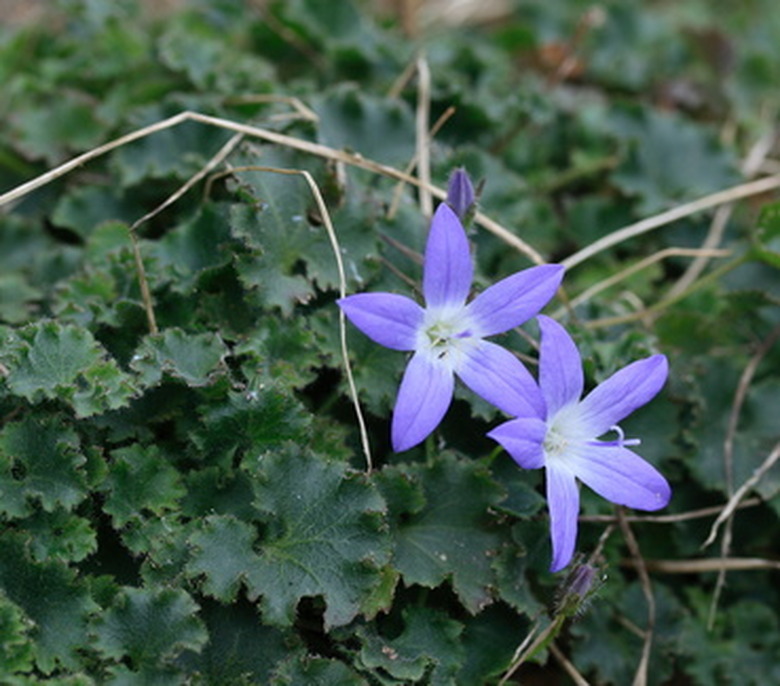Root System Of A Periwinkle Flower
The common periwinkle (Vinca minor) is native to Europe and Western Asia. It forms creeping mats of evergreen foliage with purplish-blue blooms in shaded woods, along roadways and in abandoned sites. So long as the soil drains well and has a modicum of fertility, periwinkle roots can find purchase and avoid disease.
Type
The West Virginia University Extension service describes the roots of common periwinkle as fibrous, spreading and shallow. These roots prefer a soil pH near neutral (6.0 to 7.0) and rich organic matter. Fibrous root systems have no taproot, instead branching equally in all directions. Shallow root systems cannot reach deep sources of water or nutrients, and so depend on regular nutrient inputs from decaying matter and rainfall.
- The common periwinkle (Vinca minor) is native to Europe and Western Asia.
- The West Virginia University Extension service describes the roots of common periwinkle as fibrous, spreading and shallow.
Function
Fibrous root systems anchor the plant by clinging to the surface in several places. The abundance of branches provides more surface area for water and nutrient absorption. Shallow roots rarely sit in moist soil for long, avoiding the areas where soil-borne fungal diseases breed. Instead, the roots stretch horizontally in search of more deposits of organic matter, and to increase the surface area to catch rain before it seeps down.
Benefits
The fibrous mats of periwinkle roots help prevent erosion and keep out weeds. This makes them well-suited to steeper grades and other areas where lawns can't compete with weeds. They also work well around trees, since tree roots seek water and nutrients deeper than periwinkle's shallow roots, and periwinkles don't mind the shade from the tree.
- Fibrous root systems anchor the plant by clinging to the surface in several places.
- Instead, the roots stretch horizontally in search of more deposits of organic matter, and to increase the surface area to catch rain before it seeps down.
Diseases
The most common mistake with periwinkles is watering too often, or planting them in soils that don't drain well enough between watering. If the roots sit in moisture too long, they become infected with a fungal root rot called Phytophthora nicotianae. The disease can infect the roots, root collar or leaves–and quickly spread to the rest of the plant. The leaves begin to wilt and decline as the infection spreads through the roots, destroying the plant's means of nutrient absorption.
Considerations
Wait until the first 2 to 3 inches of soil are dry before watering. Plant in an area with excellent drainage to prevent root rot in case of frequent rains. Raised planters are marvelous for periwinkles, as are slopes and inclines. Periwinkles can spread aggressively to places with fertile soils, out-competing lawns or ornamentals if they're not kept in check. In some areas of the United States, periwinkles are considered an invasive weed when they escape to the wild.
- The most common mistake with periwinkles is watering too often, or planting them in soils that don't drain well enough between watering.
- Periwinkles can spread aggressively to places with fertile soils, out-competing lawns or ornamentals if they're not kept in check.
